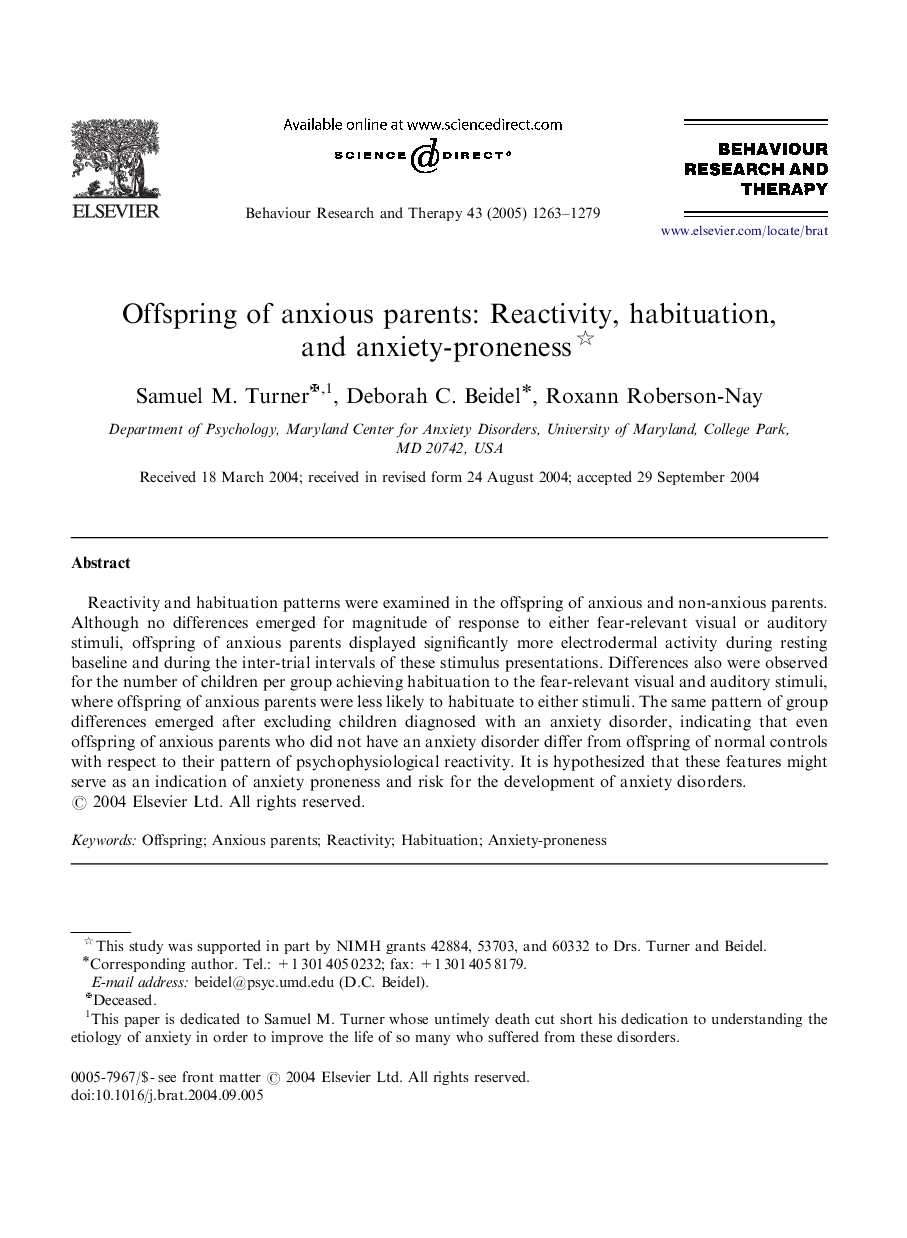| Article ID | Journal | Published Year | Pages | File Type |
|---|---|---|---|---|
| 10445115 | Behaviour Research and Therapy | 2005 | 17 Pages |
Abstract
Reactivity and habituation patterns were examined in the offspring of anxious and non-anxious parents. Although no differences emerged for magnitude of response to either fear-relevant visual or auditory stimuli, offspring of anxious parents displayed significantly more electrodermal activity during resting baseline and during the inter-trial intervals of these stimulus presentations. Differences also were observed for the number of children per group achieving habituation to the fear-relevant visual and auditory stimuli, where offspring of anxious parents were less likely to habituate to either stimuli. The same pattern of group differences emerged after excluding children diagnosed with an anxiety disorder, indicating that even offspring of anxious parents who did not have an anxiety disorder differ from offspring of normal controls with respect to their pattern of psychophysiological reactivity. It is hypothesized that these features might serve as an indication of anxiety proneness and risk for the development of anxiety disorders.
Keywords
Related Topics
Health Sciences
Medicine and Dentistry
Psychiatry and Mental Health
Authors
Samuel M. Turner, Deborah C. Beidel, Roxann Roberson-Nay,
